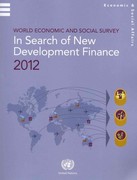Question
peer 1: My results for this week's simulation were Rd one $1.24, Rd two .95, and Rd three 1.58. I always made a profit, but
peer 1: My results for this week's simulation were Rd one $1.24, Rd two .95, and Rd three 1.58. I always made a profit, but I could only sell Rd two because I needed to work harder to make a profit. The time was a significant factor for me because I was trying to aggressively upcharge to force bidders to raise bids. However, the competition wouldn't join me in my tactics. The equilibrium price in this simulation was less than the oranges' retail price. It illustrates how a surplus of oranges resulted from increased production and decreased demand. However, the price and the equilibrium price were not the same. The price comprises various components, such as labor costs and operational overhead. Therefore, it cannot be the same as the equilibrium price. Supply and demand determine the equilibrium cost. It excludes other elements that a company must consider when choosing its pricing. The price of items can occasionally be higher or lower than the equilibrium price. The amount desired is less than the quantity available if the price is higher. When supply exceeds demand, the converse might occur, resulting in a lower price than the equilibrium price.
To remain competitive and increase demand for a company's goods or services, I must recognize price elasticity in my company and modify prices accordingly. I need to know if an order is elastic at a particular price level while examining price elasticity and setting prices for my company. Cutting costs would be advantageous since more of the offered product would be produced, and more money would be made. Because the percentage price increase will result in a lesser percentage decline in quantities sold and yet increase income, I will raise product pricing if demand is inelastic. I will regularly analyze demand elasticity to assist my company's growth so that I can understand what the market is doing and make adjustments to avoid revenue losses.
The price elasticity of demand is affected by three variables: similar replacements for specific items, the relevance of cost to customers, and the number of uses the product has. The price is elastic when there are comparable substitutes for a product. Customers will search for a less expensive, similar product until the price drops once again if a product's price increases. Consider a rich set of customers; their pricing tends to be inelastic since they do not typically care about it. They frequently purchase the products and brands they desire without considering the price. Then you assess low-income customers; when costs vary, their preferences alter as they pay closer attention to expenses. Then you consider the low-income customers; when prices change, their preferences adjust as they spend more immediate attention to costs. This group typically buys less expensive products to remain under a specific budget. A product is often inelastic when evaluated for a single use since a price adjustment will only affect the results in that usage. However, if a product has several advantages, its price is elastic because it influences the demand for its numerous services.
Peer 2: During my first attempt at selling oranges in the simulation I made a total profit of $1.63. As the game went on the cost of the oranges steadily rose which made my profit steadily decline; profit on the first orange was $.88, second was $.54 and third was $.21.
The price I set was not the same as the equilibrium price, as the cost of the oranges increased so did my selling price so I could make a higher profit.
Price elasticity of demand measures the change in the quantity demanded of a good in response to a change in the price of the good. I think price elasticity of demand would heavily impact the pricing in my business as I would want to be profitable but also considerate of the competition.
The determinants of price elasticity of demand are the availably of substitutes, necessity versus luxury goods, the definition of the market, and the time horizon
In your responses, comment on at least two posts from your peers and share an example of a company that experienced a change in revenue as the result of a change in the price of the good or service they provided. After reading your peers' posts, explain which determinants of price elasticity of demand could be the cause of the change in demand.
Step by Step Solution
There are 3 Steps involved in it
Step: 1

Get Instant Access to Expert-Tailored Solutions
See step-by-step solutions with expert insights and AI powered tools for academic success
Step: 2

Step: 3

Ace Your Homework with AI
Get the answers you need in no time with our AI-driven, step-by-step assistance
Get Started


